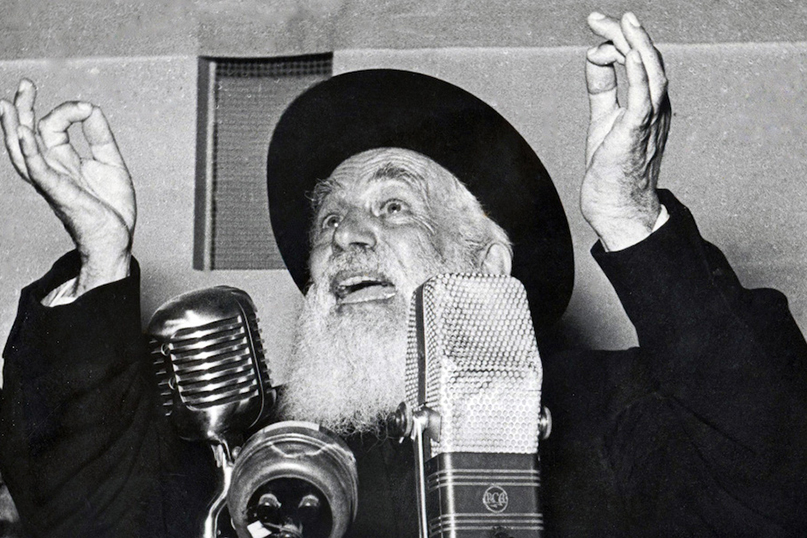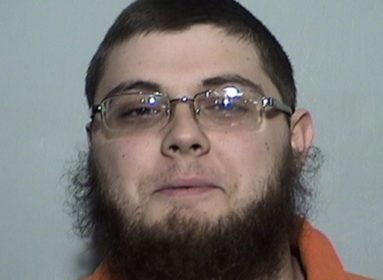
By Henry Abramson
(JTA) – Barring a miracle, Mariupol, the beleaguered industrial center in eastern Ukraine, may henceforth be known only as the city that bore the brunt of Vladimir Putin’s unprovoked assault on Ukraine’s independence and its people.
But the city also has a rich and often tragic Jewish history, shaped by conflict and the efforts of previous generations to preserve their lives, faith and culture in the face of brutality.
One such story starts at the beginning of the 20th century, not in Ukraine but in Lithuania.
Perched on the western edge of the Russian Empire, the Lithuanian town of Panevezys (pronounced Ponevezh or Ponevich) was home to some 7,000 Jews, roughly half the total population. The town boasted few amenities, but chief among them was the yeshiva established in 1909 by Liba Miriam Gavronskii, widowed daughter of the wealthy tea magnate Kalonymus Wissotsky. Rabbi Yitshak Yaakov Rabinovich (known as Reb Itsele Ponevezher, 1854-1919) was its first head, or rosh yeshiva.
The yeshiva flourished, but it faced an early threat to its existence with the outbreak of World War I. Seeking to undermine the Russian war effort, the Germans directed a Yiddish-language proclamation to the Jews of the Russian Empire, promising them full emancipation and equal rights once the Romanov dynasty was toppled. Already distrustful of his large Jewish population, the notoriously antisemitic Tsar Nicholas II ordered a brutal expulsion of Jews from the borderlands region to the interior of the Russian Empire.
The Yeshiva of Ponevezh was forced to relocate, first to Ludza in nearby Latvia, and then once again to Mariupol. Before returning to reestablish itself in independent Lithuania in 1919, the yeshiva would spend the remainder of the war years in Mariupol.
Why Mariupol? The great distance from the front lines certainly factored in the thinking of the rosh yeshiva, but Mariupol had developed a reputation as a haven for Jewish settlement. In 1791, the port city was added to the Pale of Settlement, the region of the Russian Empire designated for Jews. By 1847 just over a hundred Jews had established homes in Mariupol, participating in the Black Sea trade. It became a destination for Jews looking for economic opportunity and those fleeing the overcrowded regions of Lithuania and Belarus. By the end of the 19th century, the city was home to over 5,000 Jews, constituting 16% of the population; the 1926 census records 7,332 Jews in Mariupol, or 18% of the city.

(National Library of Israel)
The expanding, dynamic Jewish community of Mariupol – disturbed only by riots associated with the 1905 revolution – came to an abrupt end with the Nazi invasion. Mariupol’s Jews were rounded up and shot by Einsatzgruppen on a single dark day – Oct. 18, 1941 – as part of the horrific “Holocaust by Bullets.”
As for the Lithuanian yeshiva that was sheltered by Mariupol in World War I, it went on to establish itself as one of the greatest institutions of Talmudic study during the interwar years. In 1939, however, war came to Panevezys again, with both the Soviet Union and Nazi Germany invading Lithuania. Under the leadership of Rabbi Yosef Shlomo Kahaneman (1888-1969), the yeshiva continued to function under Communist rule despite the fact that he was trapped outside the country, with students moving from one synagogue to another until the Nazis took over in June 1941 and murdered them all, together with most of Rabbi Kahaneman’s family.
In 1944, Rabbi Kahaneman reestablished the Ponevezh Yeshiva once again – this time in B’nai Brak, in what would become Israel – with seven students. Amazingly, it has grown to reclaim its reputation among the most prominent institutions of higher Talmudic education in the world; at 98, its current rosh yeshiva, Rabbi Gershon Edelstein, is regarded by many as the spiritual leader of the “Lithuanian” non-Hasidic stream of haredi Orthodoxy.
After the Holocaust, Jews slowly trickled back into Mariupol, which in 1948 was renamed Zhdanov by the Soviets after the sudden death of Andrei Zhdanov (1896-1948), long rumored to be Joseph Stalin’s presumed successor (his son also married the Soviet dictator’s daughter). By 1959 over 2,000 Jews lived in the city, but only constituted about 1% of the total population.
With the collapse of the Soviet Union, the city reclaimed its original name of Mariupol in 1989, and became part of newly independent Ukraine shortly thereafter. The heroic presence of the Chabad-Lubavitch movement in Mariupol, as in many formerly Soviet communities, supported the tiny Jewish population that remained after most of them emigrated to Israel in Operation Exodus – when Jews escaped the crumbling Soviet Union more than three decades ago – and continued to serve even through the Russian invasions of 2014 and 2018. Now, in the midst of the invasion of 2022, Chabad and others are working to evacuate as many of them as possible.
Henry Abramson is a specialist in Jewish history and thought who currently serves as a dean of Touro College in Brooklyn, New York.
Main Photo: Since the 1990s, when its roof collapsed under heavy snow, all that remains of the The Choral Synagogue in Mariupol, Ukraine, is the brick facade and foundations. (Wikimedia Commons)








 Southern New England Jewish Ledger
Southern New England Jewish Ledger














